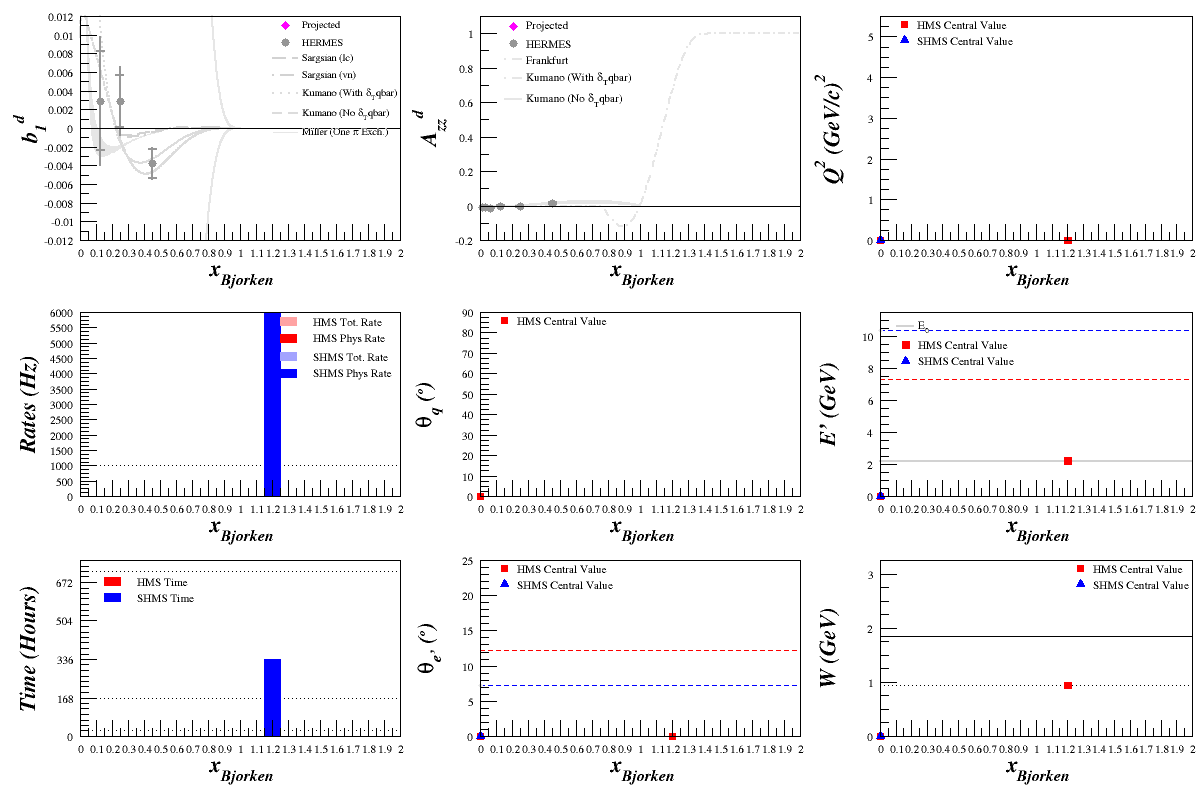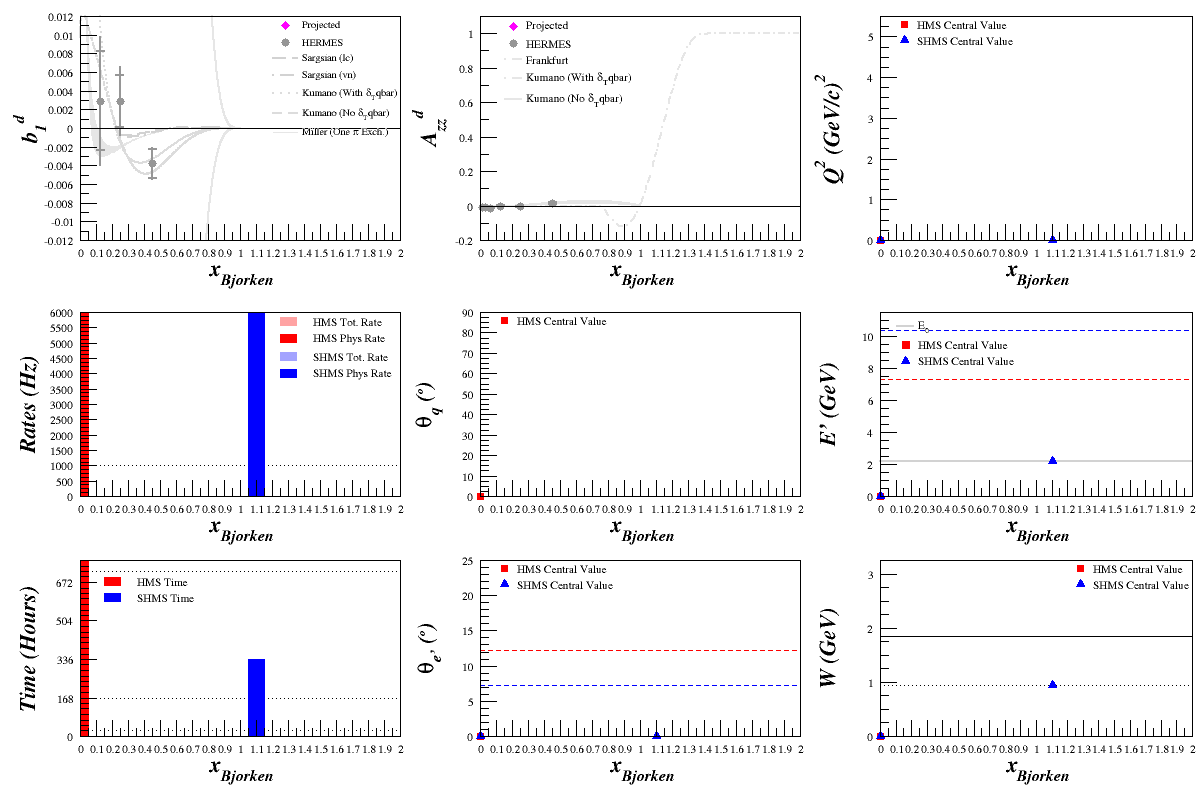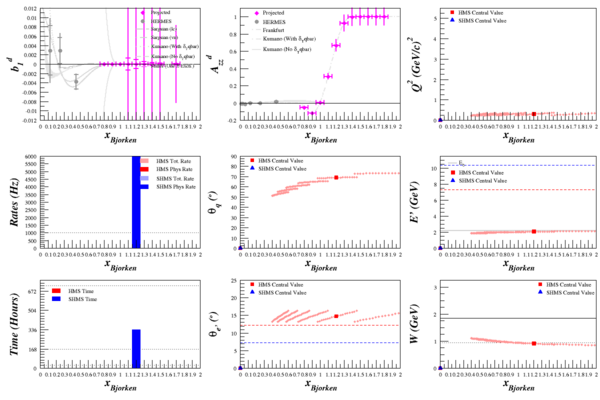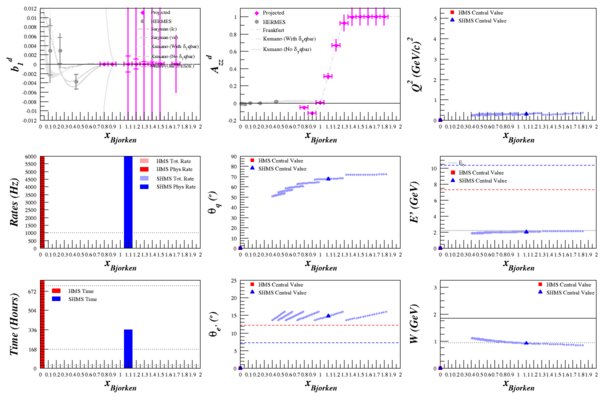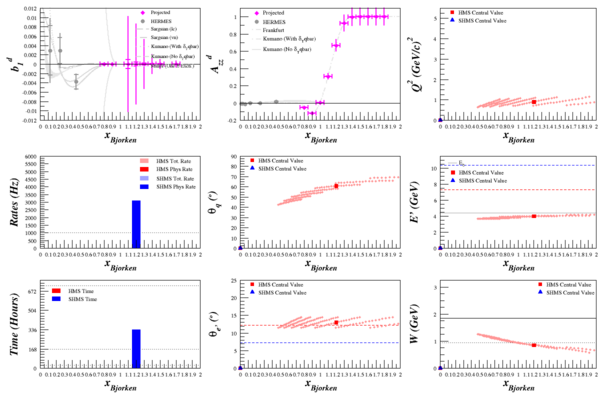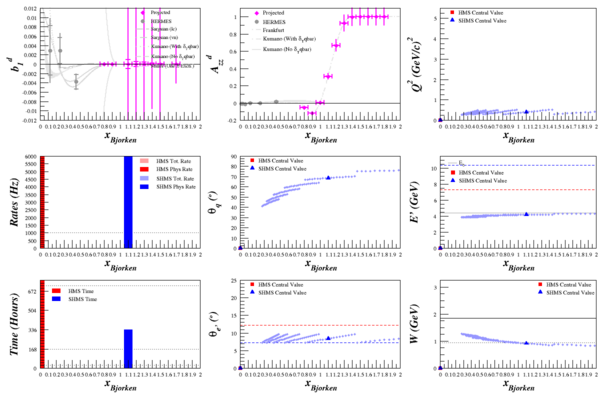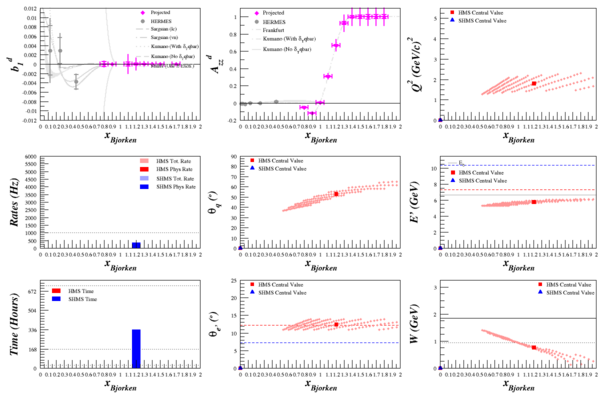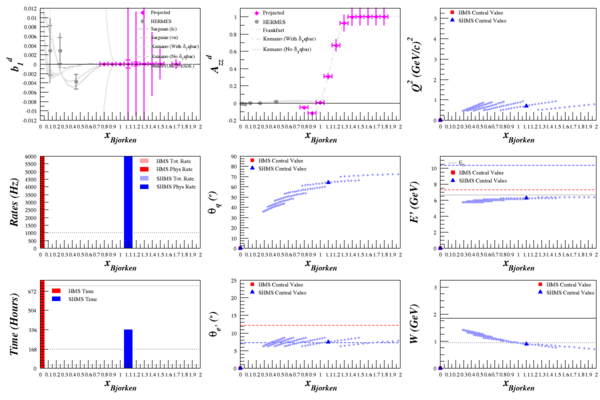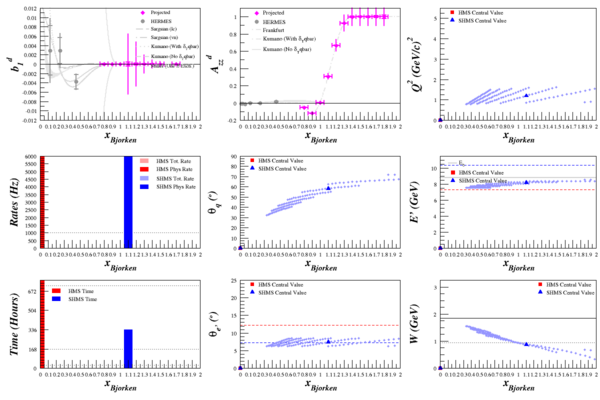Elong-13-09-18
From HallCWiki
Jump to navigationJump to searchOptimizing Azz in QE and x>1 Range
Beam Energy = 2.2 GeV
HMS
SHMS
Beam Energy = 4.4 GeV
HMS
SHMS
Beam Energy = 6.6 GeV
HMS
SHMS
Beam Energy = 8.8 GeV
HMS
SHMS
Beam Energy = 11.0 GeV
HMS
SHMS
Optimization Results
Beam Energy = 2.2 GeV
Beam Energy = 4.4 GeV
Beam Energy = 6.6 GeV
Beam Energy = 8.8 GeV
Beam Energy = 11.0 GeV
(None for HMS -- rates drop off dramatically by the time it's in a good kinematics range)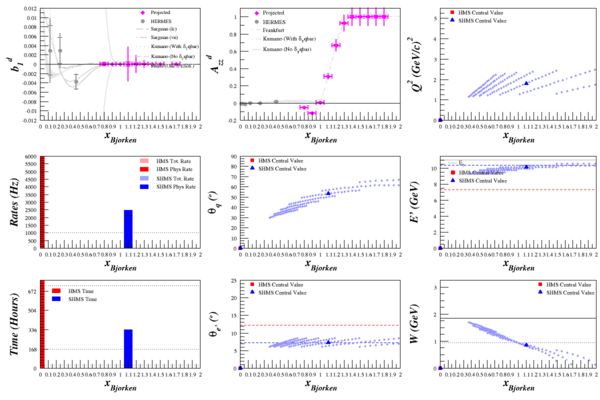
Fixed uncertainty due to large asymmetry
Previously, the code was using a simplified $\delta A_{zz} = \frac{4}{f \cdot Pzz \sqrt{N}}$. This gave all of the above uncertainties, as well as this one:
Going back through the uncertainty tech note, the assumption of a small asymmetry isn't made until after Eq. 28. Utilizing the full uncertainty (Eq. 28 and 25), $\delta A_{zz} = \frac{2}{f \cdot Pzz}\sqrt{\frac{N_{Pol}}{N_u^2}+\frac{N_{Pol}^2}{N_u^3}}$, the uncertainties change (very slightly) to:
